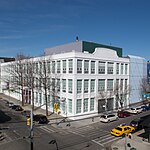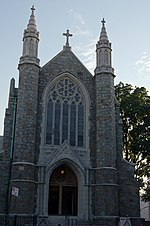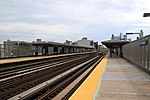Broadway station (BMT Astoria Line)
1917 establishments in New York CityAstoria, QueensBMT Astoria Line stationsFuture accessible New York City Subway stationsNew York City Subway stations in Queens, New York ... and 3 more
New York City Subway stations located abovegroundRailway stations in the United States opened in 1917Use mdy dates from June 2017

The Broadway station is a local station on the BMT Astoria Line of the New York City Subway. It is located above 31st Street at Broadway in Astoria, Queens. The station is served by the N train at all times, as well as by the W train on weekdays.
Excerpt from the Wikipedia article Broadway station (BMT Astoria Line) (License: CC BY-SA 3.0, Authors, Images).Broadway station (BMT Astoria Line)
31st Street, New York Queens
Geographical coordinates (GPS) Address Nearby Places Show on map
Geographical coordinates (GPS)
| Latitude | Longitude |
|---|---|
| N 40.761951 ° | E -73.925414 ° |
Address
31st Street & Broadway
31st Street
11101 New York, Queens
New York, United States
Open on Google Maps








